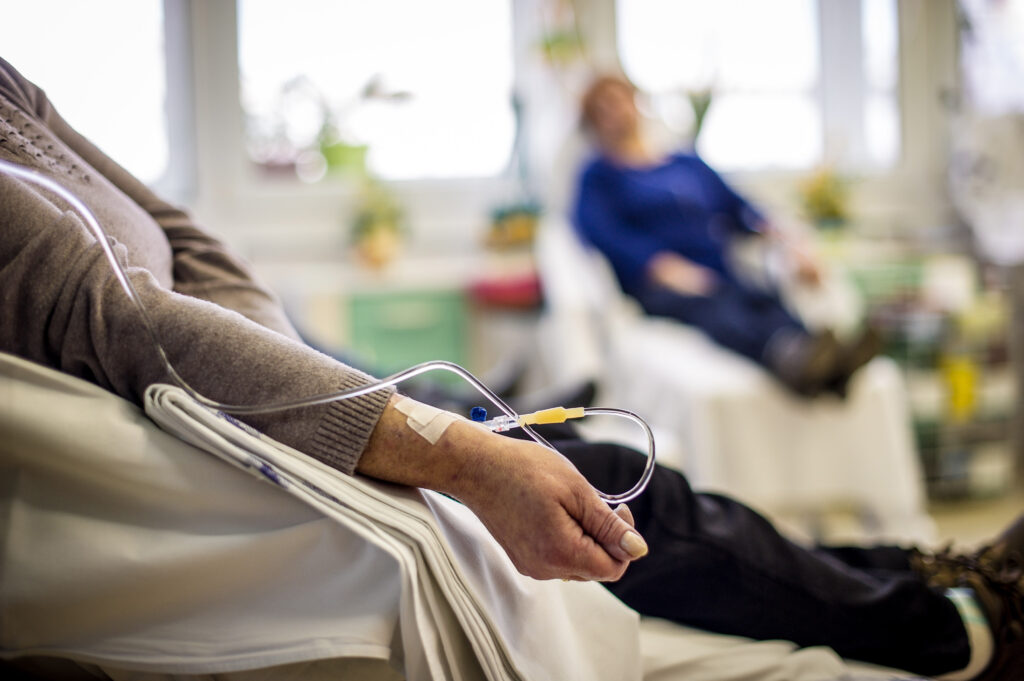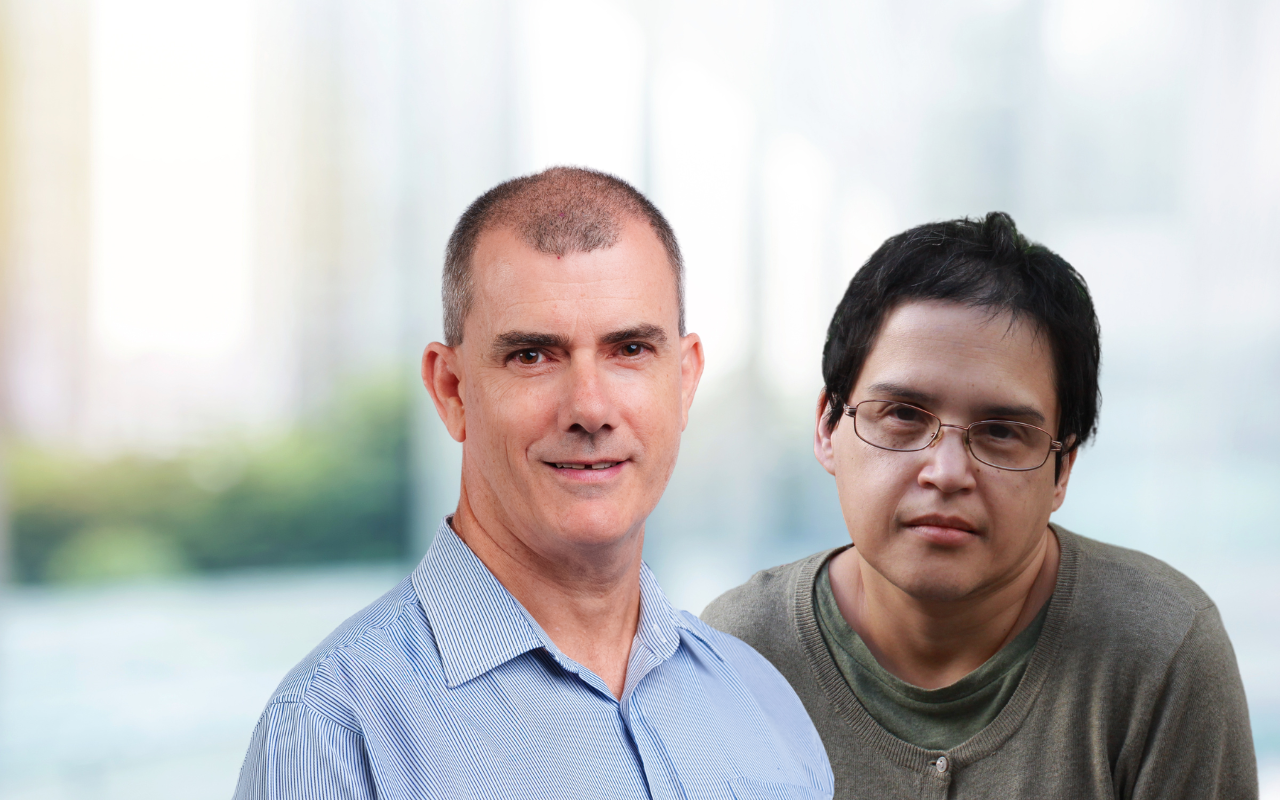Australians living in regional and more disadvantaged areas are more likely to have adverse outcomes after a rare cancer diagnosis, but good work is under way to reduce the isolation of regional patients living with these rare conditions.
Ironically, rare cancers are not rare.
That is, they are rare individually, since the international definition of what constitutes a rare cancer is based on having an incidence rate of fewer than six cases for every 100 000 people. So it is true that people who are diagnosed with a rare cancer face a diagnosis that few others experience.
However, there are many types of rare cancers, up to 200 in fact.
So, although they are rare cancer types individually, when combined, more than 20% of invasive cancers diagnosed in Australia are categorised as rare cancers, with about 27 000 rare cancers diagnosed each year in Australia between 2007 and 2016.
This means that the specific challenges associated with a diagnosis of a rare cancer type need to be faced by many Australians.
The need for research
We have recently conducted a study into rare cancers, since, due to their small numbers, there is less known about the causes of each rare cancer type compared with more common types of cancer.
There is also less known about the symptoms of rare cancers, which can lead to late or incorrect diagnoses. Additionally, the small number of cases makes it challenging to conduct clinical trials, limiting effective treatment options and evidence-based management. This typically results in worse medical and psychosocial outcomes, so there is an urgent need to understand rare cancers better and quantify their impact in Australia.
Until recently, the rarity of rare cancers has meant that there was little published research on these cancer types.

What has been done so far
The work of the RARECARE consortium in Europe has not only helped to raise the profile of rare cancer types but also provided a recognised definition of what constitutes a rare cancer type. This has made possible epidemiological analyses that can be compared internationally.
A recent study in Western Australia and Australian Institute of Health and Welfare (AIHW) monographs have provided some epidemiological data on rare cancer types in Australia, but little was known about how the impact of rare cancer types varied by geographical location across Australia. We wanted to address that gap in our study and, ultimately, include rare cancers in an upcoming release of the Australian Cancer Atlas.
Our study
In our study, we applied Bayesian statistical models to these cancer registry data to examine the geographical patterns of rare cancer diagnosis and survival across Australia.
Bayesian statistical models are particularly suited to these small area data because they borrow information from neighbouring geographical areas to generate more robust estimates of each area’s underlying rates, thereby reducing the influence of random variation.
This research is part of a collaboration between Cancer Council Queensland and the Queensland University of Technology (QUT), yielding the Australian Cancer Atlas.
The Atlas employs complex statistical methods and innovative visualisations to provide a free online, interactive tool that shows the geographical variations in cancer impact using data from Australian cancer registries. We plan to include these results for rare cancer types into the next version of the Atlas planned for later this year.
What we found
We found that rare cancer types collectively comprised around a fifth of all cancer diagnoses across Australia and a quarter of cancer-related deaths.
This further highlights their substantial contribution to the overall cancer burden in Australia.
The overall five-year survival rate for rare cancer was around 53%, which is relatively low compared with the average across more common cancer types.
Geographical considerations
Geographical location in Australia is often categorised by remoteness and socio-economic disadvantage. Remoteness considers distance to services and other population centres, and socio-economic disadvantage relates to the average socio-economic characteristics of people living in a specific geographical area.
Our spatial analyses found substantial correlation between the incidence and survival for rare cancer types and where Australians lived.
In particular, areas characterised as having higher socio-economic disadvantage were more likely to have higher incidence rates.
Once diagnosed with a rare cancer type, they also had worse than average survival, which magnified the greater impact that rare cancer types had on people living in these socio-economically disadvantaged areas.
Although the evidence for the incidence of rare cancers being higher in areas categorised as rural and remote within Australia was more subtle, there was strong evidence that, once diagnosed, a greater proportion of rural and remote areas had worse than average survival rates.
Thus, our study found clear evidence that the impact of rare cancer types was greatest for Australians living in more socio-economically disadvantaged and remote areas.
Why people in these areas have worse outcomes
Unfortunately, our study was not designed to answer this question. In particular, our study only considered the area level associations, rather than investigating the role of characteristics of individuals living within those areas. However, there are some potential contributors that are worth noting.
For example, the evidence that the incidence of rare cancer types varies by the socio-economic characteristics of where people live suggests that there might be potentially modifiable risk factors for these rare cancer types that require further investigation.
Known risk factors for rare cancer types include the usual suspects for all cancer types, such as smoking, alcohol and occupational exposures.
However, although it has been estimated that these risk factors account for about a third of all cancers diagnosed, it is not known whether this magnitude also applies to rare cancer types.
However, reducing the generally higher prevalence of these known cancer risk factors among people who live in socio-economically disadvantaged areas and in rural and remote areas should remain a priority. This is not just relevant for rare cancers but to improve general health.
Access to diagnostics and treatment
In addition, we know that people with rare cancers require specialist diagnostic and treatment facilities (here and here) and these facilities tend to be concentrated in large hospitals in major cities.
This means that people diagnosed with a rare cancer type while living outside of major cities often need to travel for diagnosis and treatment.
Challenges associated with travel and reduced access to certain services may help explain why survival is poorer.
It is crucial we better understand the reasons for these geographical patterns, particularly the higher impact that rare cancer types have among residents of rural and disadvantaged regions. It is hoped that by including these results in an upcoming release of the Australian Cancer Atlas will increase the motivation to do this.
The good news
There is some recent work underway. For example, a new project funded by Cancer Council Victoria is seeking to design and test a peer support-based intervention designed to reduce the information needs; the psychological morbidity, such as loneliness, isolation, depression and anxiety; and improve the quality of life for rural Australians diagnosed with a rare cancer type.
Although the results are several years away, it offers potential in finding ways to reduce some of the impact of rare cancers among this population.
The project will also consider the important question of what constitutes a peer supporter for people diagnosed with a rare cancer.
For example, is the most effective peer supporter someone who has been diagnosed with the same type of rare cancer, or would someone receiving the same type of treatment and/or living with specific treatment side effects provide more effective peer support?
Obtaining more clarity on this might help guide the formation of rare cancer subgroups, thus reducing that sense of cancer isolation to these patients.
Importantly, there is support available now. For example, health professional who work on the free, confidential 13 11 20 telephone service operated by Cancer Councils across Australia work to identify the information and support needs of people with cancer and their families, and then refer them to relevant internal and external services in line with the person’s needs.
Role of early diagnosis
Our study’s findings were not adjusted for stage at diagnosis, leaving uncertainty about the extent to which rare cancers diagnosed among Australians living in disadvantaged or regional and remote areas were more advanced compared with those in urban areas.
However, other results have already shown this to be true for more common cancer types, and considering the additional challenges in diagnosing rare cancers, it is probable that a similar pattern persists. If so, it highlights the importance of seeking medical advice promptly.
Where to from here
Raising awareness of rare cancer types among the Australian public and health care providers is crucial. The well worn premise of “if anything changes, see your doctor” remains true.
In remote communities or for patients facing financial hardships, following this premise may not always be straightforward. Prioritising interventions designed to remove or at least reduce health system barriers to seeking prompt medical advice will require adequate resourcing, both for further research and to implement effective interventions.
Reducing the existing inequalities will require a combination of targeted policies, community awareness, and adequate health system resources.
Professor Peter Baade is a biostatistician working as the Senior Manager of Descriptive Epidemiology at Cancer Council Queensland. Dr Paramita Dasgupta is a Research Fellow working in the same unit.
This work was only possible through the contributions of the other authors named on this study. Dr Jessica Cameron, Distinguished Professor Kerrie Mengersen, Dr Susanna Cramb, Professor Joanne Aitken and Mr Richard Trevithick, along with the data collected by each of the state and territory-based cancer registries across Australia.
The statements or opinions expressed in this article reflect the views of the authors and do not necessarily represent the official policy of the AMA, the MJA or InSight+ unless so stated.
Subscribe to the free InSight+ weekly newsletter here. It is available to all readers, not just registered medical practitioners.
If you would like to submit an article for consideration, send a Word version to mjainsight-editor@ampco.com.au.

 more_vert
more_vert